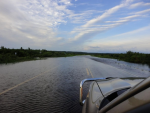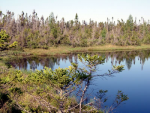TammyinWI
Talk is cheap
By Sarah Stultz Email the author
Published 5:40 pm Saturday, May 15, 2021
Part of a Union Pacific Railroad train derailed Saturday afternoon behind Eastgate Road near Goose Lake in Albert Lea.
According to the Freeborn County Sheriff’s Office, about 20 cars derailed on the southbound train.
The derailment was reported to authorities at about 1:30 p.m. in the wetland area near Goose Lake. No injuries were reported.
Albert Lea Fire Department Capt. Dennis Glassel said most of the derailed cars were empty but some carried liquid petroleum, potash, lumber and hydrochloric acid.
The Police Department said on its Facebook page there is “nothing airborne” at this time, although teams are searching the area. Police said a precautionary shelter-in-place order was in effect for nearby homes.
A chemical assessment team from Rochester was on the scene, along with the Albert Lea Fire Department, the Minnesota Department of Natural Resources, the Albert Lea Police Department and the Freeborn County Sheriff’s Office.
Glassel said the east portion of Eastgate Road is closed to give access to emergency personnel, but no other streets are affected.
Authorities have said there is no immediate harm to the public in the area. They are asking people to stay out of the area to allow access for crews.
Union Pacific crews and contractors are onsite and will be working to clear the line.
Look to the Tribune for more information as it becomes available.
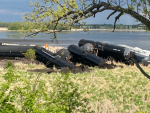
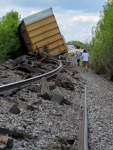
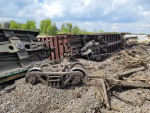
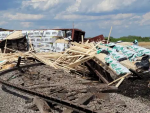
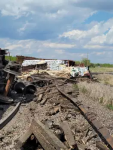 Union Pacific train derails near Goose Lake - Albert Lea Tribune
Union Pacific train derails near Goose Lake - Albert Lea Tribune
Hazmat team responds to hydrochloric acid leak after 50-car train derails in Albert Lea, Minnesota (VIDEO)
16 May, 2021 02:48 / Updated 8 hours ago
Nick Streiff
@nickstreiff
UPDATE: Officials with Union Pacific confirm to @WCCO that two of the derailed cars are leaking hydrochloric acid. They say they are "working with emergency responders to determine a response plan."
Union Pacific said they were “working with emergency responders to determine a response plan,” according to WCCO reporter Nick Streiff, but the scale of the leak was unclear.
Hydrochloric acid is a strong corrosive substance used as a laboratory reagent. The short-term effects of inhalation can include irritation to the nose, eyes, and respiratory tract.

 www.rt.com
www.rt.com
More pics and video, at links.
Published 5:40 pm Saturday, May 15, 2021
Part of a Union Pacific Railroad train derailed Saturday afternoon behind Eastgate Road near Goose Lake in Albert Lea.
According to the Freeborn County Sheriff’s Office, about 20 cars derailed on the southbound train.
The derailment was reported to authorities at about 1:30 p.m. in the wetland area near Goose Lake. No injuries were reported.
Albert Lea Fire Department Capt. Dennis Glassel said most of the derailed cars were empty but some carried liquid petroleum, potash, lumber and hydrochloric acid.
The Police Department said on its Facebook page there is “nothing airborne” at this time, although teams are searching the area. Police said a precautionary shelter-in-place order was in effect for nearby homes.
A chemical assessment team from Rochester was on the scene, along with the Albert Lea Fire Department, the Minnesota Department of Natural Resources, the Albert Lea Police Department and the Freeborn County Sheriff’s Office.
Glassel said the east portion of Eastgate Road is closed to give access to emergency personnel, but no other streets are affected.
Authorities have said there is no immediate harm to the public in the area. They are asking people to stay out of the area to allow access for crews.
Union Pacific crews and contractors are onsite and will be working to clear the line.
Look to the Tribune for more information as it becomes available.




 Union Pacific train derails near Goose Lake - Albert Lea Tribune
Union Pacific train derails near Goose Lake - Albert Lea TribuneHazmat team responds to hydrochloric acid leak after 50-car train derails in Albert Lea, Minnesota (VIDEO)
16 May, 2021 02:48 / Updated 8 hours ago
Nick Streiff
@nickstreiff
UPDATE: Officials with Union Pacific confirm to @WCCO that two of the derailed cars are leaking hydrochloric acid. They say they are "working with emergency responders to determine a response plan."
Union Pacific said they were “working with emergency responders to determine a response plan,” according to WCCO reporter Nick Streiff, but the scale of the leak was unclear.
Hydrochloric acid is a strong corrosive substance used as a laboratory reagent. The short-term effects of inhalation can include irritation to the nose, eyes, and respiratory tract.

Hazmat team responds to hydrochloric acid leak after 50-car train derails in Albert Lea, Minnesota (VIDEO)
A Union Pacific cargo train carrying mixed commodities has derailed in Minnesota, leaving dozens of cars piled up on top of one another – some leaking hydrochloric acid – with a hazardous materials team responding to the incident.
More pics and video, at links.



